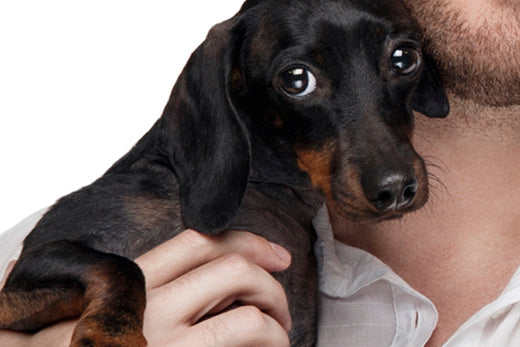A dog that has faced abuse in the past can become distressed and fearful of humans. Neglect and ill-treatment meted out by a past owner can have lasting consequences for the canine. The dog even after being rescued will exhibit a lack of trust in humans. A poor start in life damages the animal’s confidence. When you plan to adopt a rescue dog prepare yourself for a long recovery process where the dog turns less fearful and more confident around humans.
A new owner must be ready to give plenty of time to treat the four legged fellow. Returning the dog to a shelter isn’t an option, therefore it is important to prepare oneself to patiently face new responsibilities and not hurt the already mistreated canine.
When welcoming a rescue dog in your home remember that the first step should be to win the pooch’s trust before you start any normal training procedure.
These 7 tips that’ll help you calm your dog and regain its lost trust in humans:
A safe resting spot: Allot a safe space for the dog in your home before it arrives. This spot must be a secluded one away from the usual clamor in the house. A traumatized dog is always alert trying to assess any possible danger around. Your task is to make it feel less reactive and more secure.
A cozy spot where the pooch can retreat and not be disturbed is the first step towards instilling a sense of security in him/her. Image:stories.barkpost.com[/caption]
- Never punish or shout: Speak to your dog in a low and soft voice. Shouting, hitting or punishing the dog is big NO. This will scare the dog and will be like taking a step backwards in this recovery process.
- Do not force your dog to do things: Let the dog enjoy a sense of control. A dog that was abused in the past never had the opportunity to feel in control of any situation. Therefore never force it to do anything rather direct it to positive actions by rewarding desirable behaviors. This will naturally lead the dog to exhibit what is right.
- Traumatized dogs need love: A dog that has been a victim of abuse may shy away from humans. But you have to continue with your efforts of filling love & security in the pooch’s life. Don’t be discouraged by its indifference.[caption id="attachment_17577" align="aligncenter" width="300"] Trauma impacts how a dog will evaluate information even after it has been rescued from a miserable life. However your love coupled with a positive environment has the power to alter this dog’s fear. Image- www.pettrainingschool.co.uk[/caption]
- Expect a gradual shift in your dog’s attitude: It will be able to trust you in due course of time. Continue having positive communications with the pet for it to eventually have complete trust in you. Recovery is possible for the rescue dog but it will not happen quickly. Some situations, scents and actions can trigger nervousness in the rescued pet transporting it to a flash-back stage.
- Look out for signs of distress: While interacting with your dog observe its body language. The dog is stressed if it begins to lick its nose or lips, yawns, looks the other way, tucks its tail between its legs or is avoiding you/other people. Remove the dog from the current situation that is instilling fear in the pet. Perhaps something as unthreatening as a simple nail trim may cause the dog to freeze. Signs of distress includes dog avoiding eye contact.
- Offer choices to the dog: Empowering it to choose right things concerning its daily care and exercise will help the dog gain confidence. Pushing a rescue dog towards doing something should be avoided. Place a few beds so that it can pick which bedding to sleep on, offer a safe amount of freedom to the dog while walking it and play along by allowing it to turn in whichever direction it wants to, and if you want to brush the pooch’s coat or trim its nails let it offer itself to you comfortably. Wherever possible offer it choices and reward the dog to encourage positive behaviors.
Dogs can’t verbalize their fears but only express through body language. Most dogs that have been abused will shy away from humans and other dogs/animals. Some rescue dogs however become extremely clingy towards their new humans and show signs of separation anxiety in their absence. Aggression is another outcome of abuse and a dog’s attempt to defend itself. A victim of cruelty begins to associate any kind of physical contact (even a loving pet) with damage. Growling and acting aggressive is its way of protecting itself. There are also some physical signs that suggest a dog was abused, it may have several wounds on its body and may even face difficulty while walking. Apart from physical abuse, cruelty towards a pet can be in the form of keeping the animal chained outdoors under extreme weather conditions, not giving it sufficient food & clean drinking water, or housing it in unhygienic conditions.

